Honey expertise
FROM THE HONEYCOMB TO THE GLASS
The beehive as a whole works perfectly because the individuals harmonize wonderfully with one another. It is very similar with us at Breitsamer.
Our honey competence is based on many individual components, which together represent a great wealth of knowledge.
Honey processing is and remains a craft activity – regardless of whether you have one bee colony or a hundred bee colonies and more. It requires knowledge and experience to select high-quality honey and gently fill it with consistently high quality.
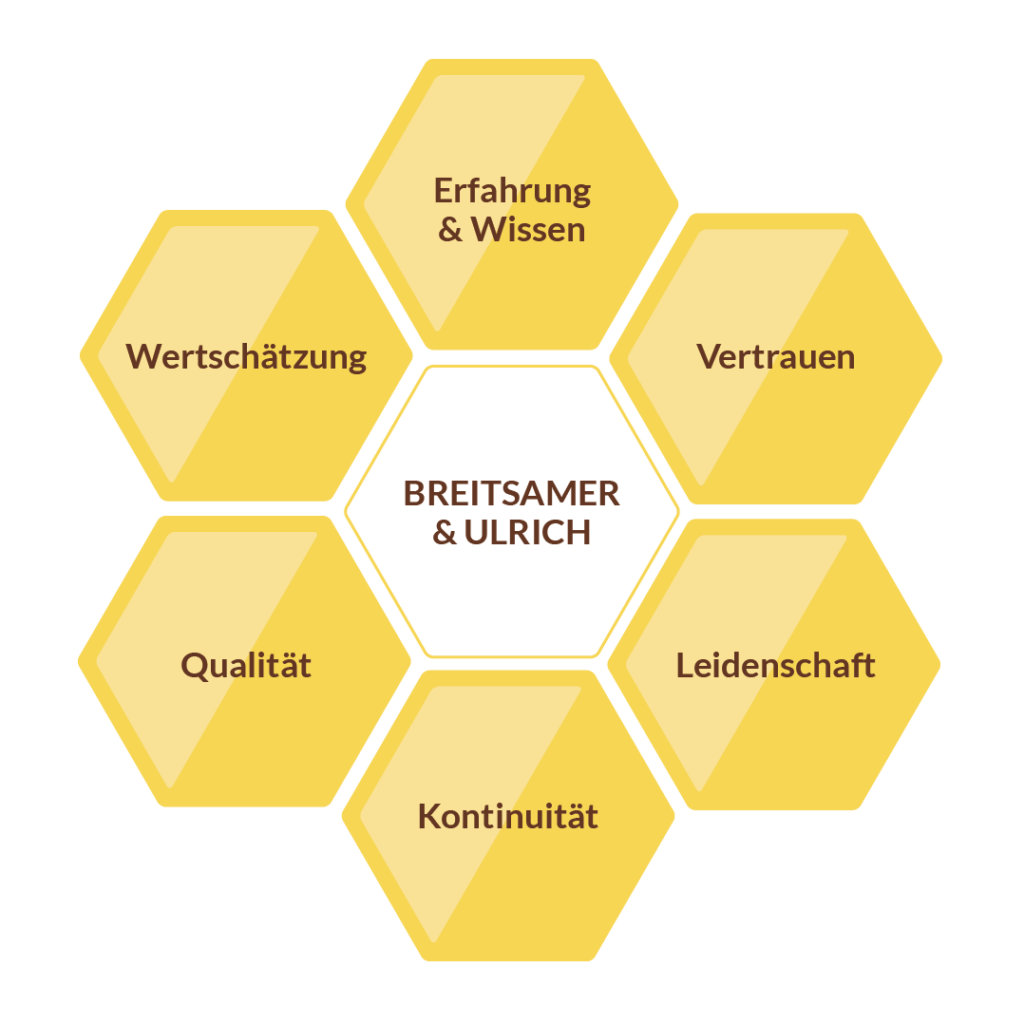
Beautiful bees
„Busy as a bee“
… a well-known saying. And it’s true: honey and wild bees perform really sensational pollination services.
A basic distinction is made between honey and wild bee species. There are nine honey bee species and around 30.000 wild bee species worldwide. The so called Western honey bee and around 560 species of wild bees live in Germany.
But it’s not just about honey, which we get exclusively from honey bees. It’s about so much more!
The bee is the third most important livestock after cattle and pigs!
80% of all crops in Germany are pollinated by bees!
Their economic value is therefore more than 4 billion euros!
An additional benefit arises from other products that bees manufacture: Their beeswax is used for candles, in cosmetics and in food production (coating agent E901). Pollen and bee bread are used as dietary supplements, and propolis and bee venom are believed to have medicinal effects.
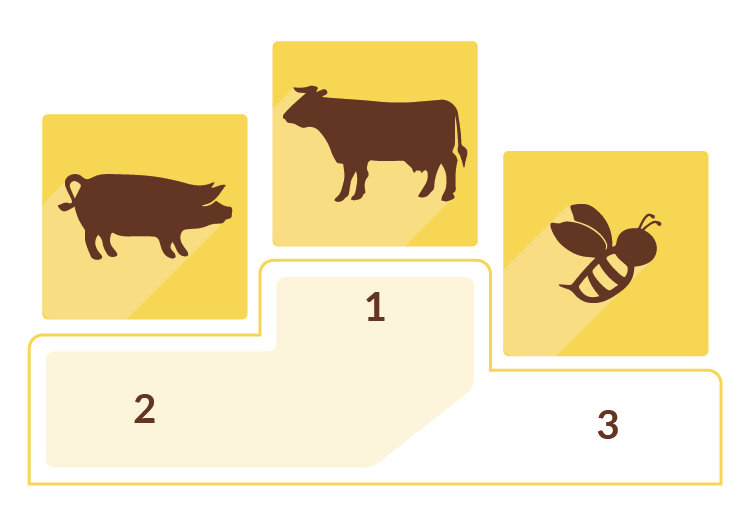
A gift of nature
Honey has been given special attention for thousands of years – it has always been considered one of the most valuable foods of all. The interaction of plants and bees creates a product that contains an unusually large variety of ingredients.
Regardless of whether a beekeeper owns one bee colony or 100 bee colonies – the manual work remains.
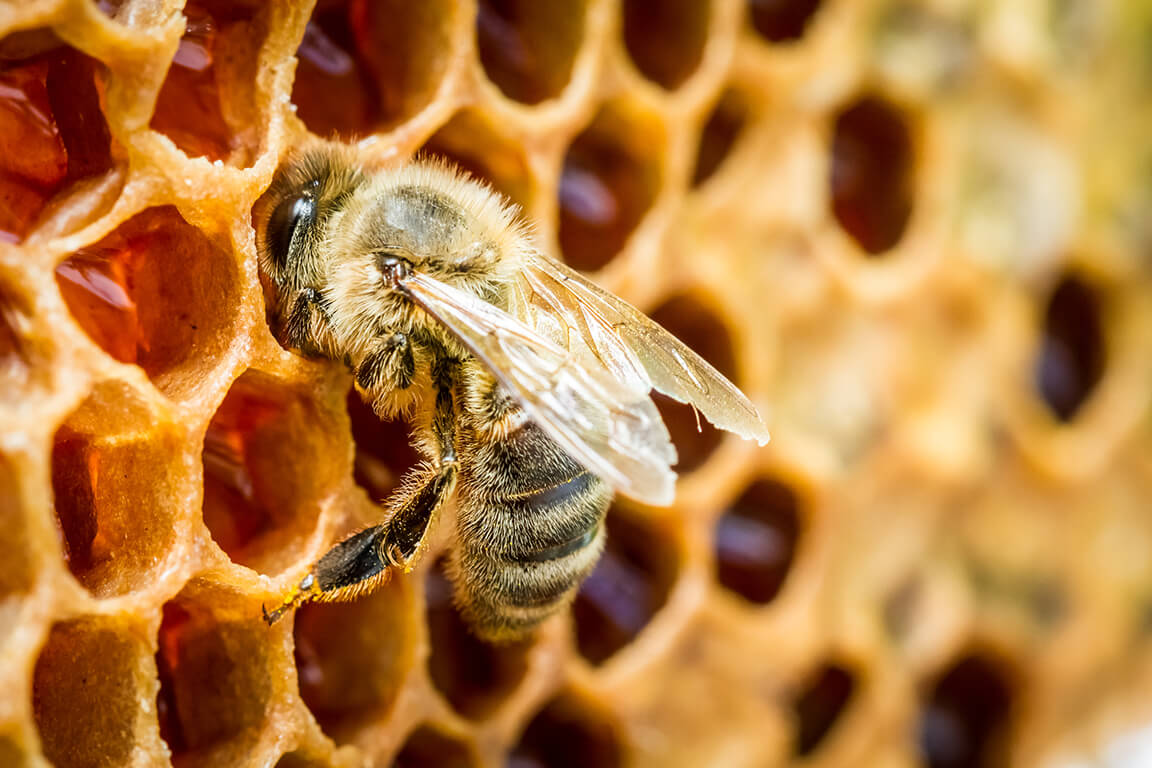
the history of honey
Humans have been “hunting” honey for around 10.000 years.
Honey has always been considered very precious. For a long time it was the only sweetener available to people. Honey was also a popular gift because the bees were worshiped. The valuable honey was even used as a means of payment. In addition, in ancient times, honey was considered a healing and beauty agent, the Egyptian Queen Cleopatra bathed in goat’s milk with honey.
From 500 AD the first approaches to beekeeping, the so-called Zeidlerei, can be found. Forest beekeeping (in trees) or heather beekeeping (in beehives) were practiced until the middle of the 19th century. Beekeepers had a very important position among the craftsmen.
Gradually, however, cane sugar is gaining importance as a sweetener and modern research and science are leading to the demystification of liquid gold.
what is honey?
Honey is the naturally sweet substance that is produced by honey bees. They absorb nectar from plants, secretions from living parts of plants or excretions from insects sucking on plants. By combining it with their own specific substancesit it gets dehydrated and converted, and thereafter stored and ripend in the honeycombs of the beehive.
Honey essentially consists of various types of sugar, in particular fructose and glucose, as well as organic acids, enzymes and solid particles absorbed when collecting nectar. The color of the honey ranges from almost colorless to dark brown. It can be liquid, viscous or partially to completely crystalline in nature. The differences in taste and aroma are determined by the respective botanical origin. (Source: German Honey Ordinance)
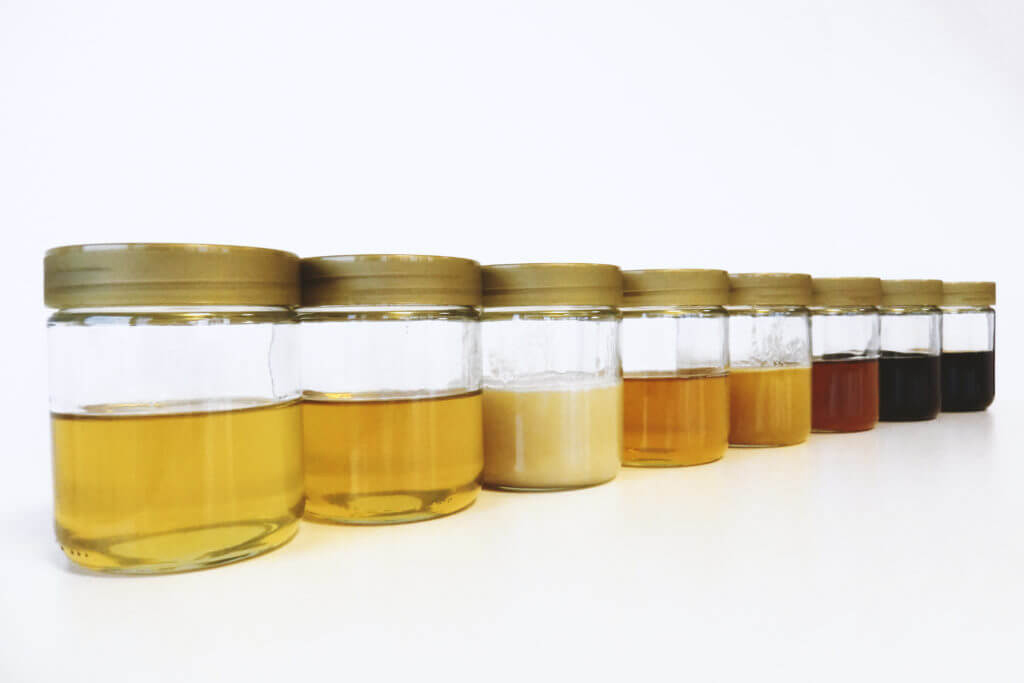
honey from a scientific point of view
Honey is produced by honey bees from flower nectar or from honeydew.
It consists of 75-80% glucose and fructose.
Other ingredients are pollen, amino acids, vitamins, inhibins, minerals, trace elements, enzymes and water (<20%). The up to 180 accompanying substances come from the plants AND from the bees.
Honey can be stored for almost any length of time if stored properly.
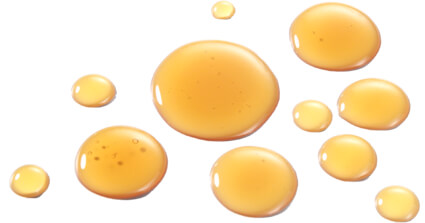
honey from a legal point of view
The Honey Regulation is, so to speak, the “purity law” for honey. According to the European Honey Regulation: “Honey is what the bees gather. Nothing may be added or taken away.”
The European Honey Regulation stipulates that only natural, unaltered, untreated honey may bear the name “honey“.
The Honey Regulation applies to all honeys offered in Germany and the EU, regardless of origin.
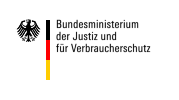
How do honeys differ?
The nature of the subtle difference
How can you get pure honey when you can find all kinds of plants in nature?
We’ll show you…
Blossomhoneys are obtained mainly from nectar, a sweet secretion produced by the nectaries of plants. Nectaries are usually located in the flowers, but can also be found in other parts of the plant, e.g. in leaf axils.
Honeydew is the starting product of leaf, forest and needle honeys, the so-called honeydew honeys. The bees collect the honeydew, which is on leaves, needles and twigs.
Most of the harvested honeys are mixed blossomhoneys. This means, that the bees obtain the honey from the nectar of a variety of different plants. Taste and appearance vary greatly depending on the location and type of plants or flowers flown over. If the blossom honey comes from a precisely definable region, it is also called landscape honey, which may bear the name of its origin.
Only honeys whose nectar or honeydew originates predominantly from a particular plant or flower species may be called varietal honeys. The first prerequisite for varietal honeys is provided by the honey bee itself: it behaves in a flower-loyal manner. If possible, it always flies to the same flowers. The second condition for the harvesting of varietal honey is the predominance of one plant species in one area.
How do we check for varietal purity?
First: about pollen analysis.
The flower pollen in the honey, which can be seen under the microscope, provides information about which flowers the bees have flown to. So-called varietal honeys or in german “Trachthonige” are defined by the proportion of pollen of a variety.
Secondly: via the analysis of the fructose-glucose ratio (FG ratio).
The ratio of the two types of sugar fructose and glucose to each other serves as an indication of the type of honey. For example, rapshoney has a fructose-glucose ratio of less than one, i.e. more glucose than fructose. Acacia honey, on the other hand, has significantly more fructose, resulting in a FG ratio of at least 1.5. As a general rule, the higher the proportion of fructose, the slower a honey crystallizes.
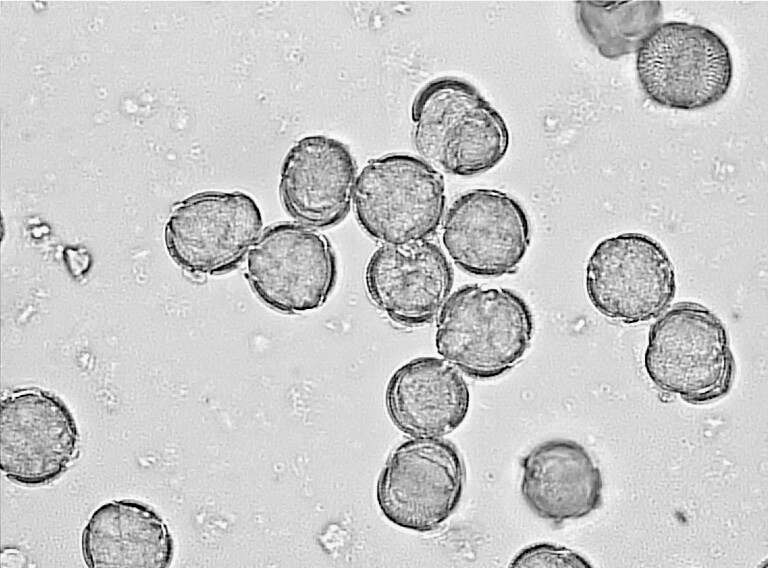
Quality is our top Priority
to guarantee you a consistent quality, the honey is checked by us in a total of three control series:
- Directly after delivery from the beekeepers
- before filling and
- once again after bottling
Our honeys are subjected to very strict quality controls, including – in addition to the determination of water content, enzyme activity and HMF value – a very elaborate microscopic pollen analysis, sensory tests and extensive residue analyses. All these values provide information as to whether the honey has been properly apicultured and handled and to which botanical or geographical origin it can be assigned.
In many other individual tests, we also examine our honey for possible residues – no easy task. Because although honey is one of the few completely original foods in our industrial society, the plants and bees – the “honey producers” – have to live in the environment that humans treat with more or less care. Therefore, in addition to controls, trust in our beekeepers plays a crucial role.
It is important to us to visit and check our contract beekeepers regularly. Only in this way can we ultimately ensure that you can enjoy our honey as a truly “clean” natural product.
Indication of origin on our honeys
The indication of origin is regulated in the so called Honey Regulation.
According to the German Honey Regulation, the country of origin (e.g. German bee honey) must be indicated for honey. On honey mixtures from more than one country of origin, one of the following indications must be given instead: “Mixture of honey from EU countries” | “Mixture of honey from non-EU countries” | “Mixture of honey from EU countries and non-EU countries”. A clearer indication of origin is not mandatory.
We at Breitsamer have the voluntary commitment to maximum transparency with an exact indication of origin. We also restrict this so that our honeys have a maximum two-country origin (e.g. Germany, Denmark).
Our honeys come exclusively from Europe, except for the Tasmanian rarities and the Fairtrade honeys. These come from Fairtrade certified cooperatives from South and Central America.
sensory testing
Our most pleasant and at the same time most difficult test. It does not depend on chemical or physical measurement data, but solely on the good nose and the fine sense of taste of our “tasters”. They have to decide whether the honey has a pleasant and, above all, variety-typical aroma. Only if this test is passed our honey actually reach the store shelves.
how is honey made?
Honey is produced from flower nectar or honeydew. The honey bee transports the flower nectar in its nectar bladder. In the process, it collects an average of 25 mg of nectar or 35 mg of honeydew. It sucks up the nectar with its proboscis. The bee has to visit 200 flowers to fill its bladder. The distance it covers is about 3 kilometers. The bees are faithful to their flowers and are stationary. That is, they fly back to the same place as long as there is nectar to be found there.
In addition, pollen remains attached to the bee’s many hairs during the collection activity. Thus, the bee ensures pollination.
On the way to the hive, endogenous juice is already added and the transformation into honey begins. Once in the hive, the collecting bee transfers the nectar liquid to its sister, the hive bee. Proboscis to proboscis, the nectar slides from one bee to the other. The so-called foraging chain then takes place in the hive. The aim of the feeding chain is to preserve the nectar in the form of honey so that it can then be stored. To do this, however, it must change.
Before the honey can be stored in the combs, the very high proportion of water must evaporate. The bees beat the honey drop back and forth, let it escape again and again, and suck it up again. In this way, the very watery sweet juice is thickened and enriched with enzymes. These enzymes come from the bees’ head glands and break down the sucrose contained in the honey into fructose and glucose.
If the honey is “right” in the opinion of the bees, then it is “ripe” and the combs are closed. This is also referred to as capping.
Now the beekeeper can harvest the honey.
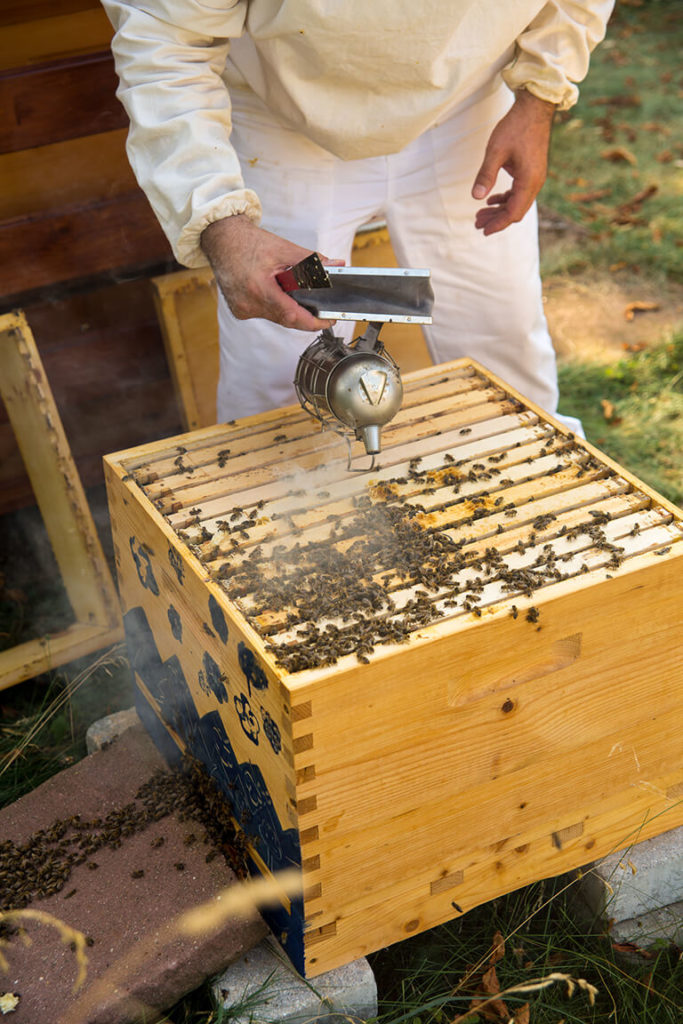
consistency of honey
All honey is clear and thick when the beekeeper spins it out of the combs. And most honeys eventually form crystals that make it milky and solid. But it depends on the type of honey when this process of crystallization begins. With some varieties, this already begins shortly after spinning.
Why does honey crystallize?
The sugars contained in honey tend to form crystals. This is a natural process without affecting the quality of honey. It is also a sign of its naturalness.
When does honey crystallize?
Almost every honey crystallizes at some point. If the honey contains mainly glucose, then the honey crystallizes very quickly (e.g. raps honey, sunflower honey). If it contains mainly fructose, then honey remains liquid longer or crystallizes very late (e.g. acacia honey, forest honey).
what about organic honey?
Organic beekeeping follows the guiding principle of ecological agriculture: “Sustainable farming in harmony with nature.” This means: The bees enjoy an environment without intensive agricultural crops and enjoy a home made of natural materials.
The most important beekeeping guidelines of the EU organic regulation:
- Bee boxes must be made only of natural materials (wood, clay or straw)
- Painting of the bee boxes only on the outside and with pollutant-free paints
- For winter feeding, extensive honey and pollen stocks must be left or organic sugar must be used
- No use of synthetic chemicals in honey harvesting, treatment of diseases or disinfection
- Only beeswax from own or other recognized organic apiaries may be used
- No clipping the wings of the queen bee
- The location must be chosen in such a way that a sufficient minimum distance to intensive agricultural crops is maintained
how to store honey
Man sollte Honig vor direkter Sonneneinstrahlung und Hitze schützen und idealerweise im Dunkeln bei Zimmertemperatur aufbewahren. So bleiben der typische Geschmack, sowie die wertvollen Inhaltsstoffe erhalten.
honey as a allrounder
Honig ist viel mehr als ein Brotaufstrich, er ist die Alternative zum Kristallzucker:
- Zum Kochen und Backen (speziell für Lebkuchen oder Kuchen mit saftiger Füllung – durch seine Fähigkeit Wasser anzuziehen, bleibt Honiggebäck lange frisch)
- Für Getränke (Tee, Milch, Kaffee, Cocktails)
- Als spontaner Energielieferant beim Sport
Als Heilmittel findet z.B. der Original Neuseeländische Manuka Honig eine vielfältige Verwendung in Kliniken und Krankenhäusern.
Und auch im Wellnessbereich (Sauna, Kosmetik, usw.) werden oft Produkte mit Honigbestandteilen verwendet.